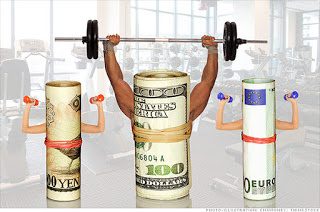
The US dollar rose against all the major and emerging market currencies over the past week, save the Russian ruble, which gained about 1.5%. Comments from several Fed officials, and most notably Yellen, drove home the message which arguably was diluted after the FOMC meeting: A rate hike this year is still the most likely scenario. This helped bolster the greenback.
On the other hand, ECB officials, including Draghi, underscored that the ECB is not yet ready to expand, extend, or alter the composition of its asset purchase scheme. And despite the core CPI in Japan falling back into deflation territory, the BOJ’s Kuroda does not appear to be on the verge of increasing its aggressive asset purchase plan, though many expect him to do so at the end of next month.
The euro lost about 1% against the dollar last week and returned to the lower end of this month’s range after setting the high the day after the FOMC meeting. The lower end of the range is found in the $1.1080-$1.1100 area. The technical indicators are soft, and the five-day average has slipped back below the 20-day average. Yet there is not strong momentum, and it looks like continued range-trading. Initially, the $1.1300-$1.1330 area may contain upticks.
The dollar has spent the month coiling in a triangle pattern against the yen. Ahead of the weekend, with Yellen’s help, and rising stocks and US bond yields, the dollar broke higher. The JPY121.25 high was the greenbacks best since September 10. It is not uncommon to see false breaks from triangle patterns. The close was just below the top of the pattern. A convincing upside break would suggest a measuring objective near JPY122.50. The technical indicators are supportive, but between the Tankan and US jobs figures, there are plenty of potential fundamental drivers.
Sterling is a dog. It lost more than 2% against the US dollar over the past week. It has fallen five cents since the post-FOMC high near $1.5660. Before the weekend, sterling traded near $1.5150, which represents its lowest level since early May. The technical indicators are soft, and the five-day moving average has broken below the 20-day average. It spends the second half of last week below the 200-day moving average (~$1.5340). Additional support is seen near $1.5080, with the $1.50 area of greater psychological significance. Sterling is very streaky lately. Recall it had a nine-day losing streak in late-August into September. It then rallied but now has a new six-session losing streak.













Leave A Comment